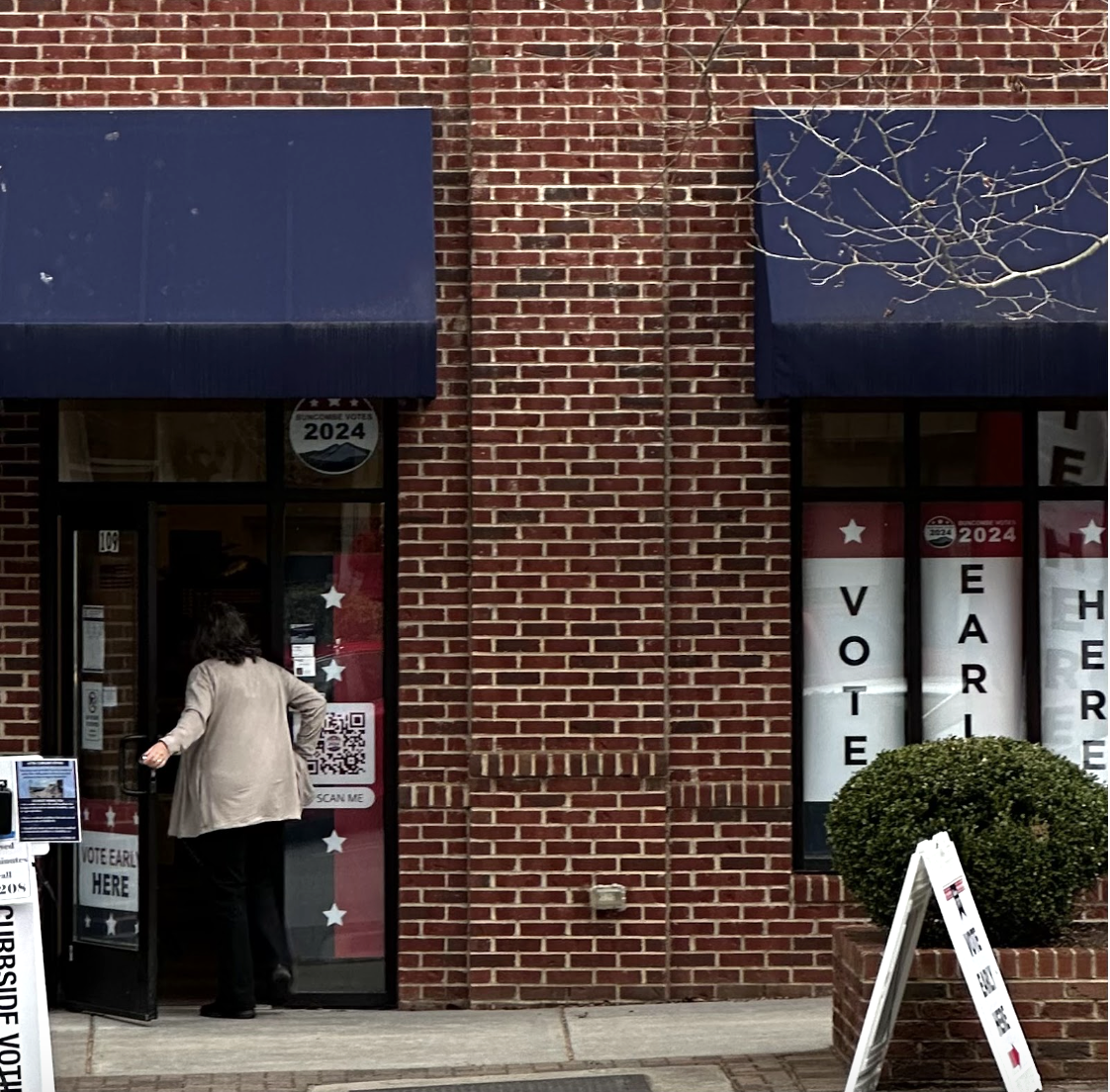North Carolina residents and political experts examine campaign strategies, gerrymandering and voter ID mandates ahead of the 2024 general election.
“I think voter suppression shows up in ways people don’t expect on the surface,” said Hope Sikes, a Charlotte native and political science major at UNC Asheville. “When we look at this new voter ID law, on the surface you might think it’s to combat voter fraud, but actually the history of voter identification laws are racist and classist. Back during the Jim Crow and voting rights era these laws were used to turn black people away at the polls. It might not seem like that now, but that legacy still lingers today.”
According to data supplied by the North Carolina State Board of Elections, the 2024 primary election voter turnout dropped 7.17% compared to the 2020 primary voter turnout.
“Voter suppression refers to any efforts or changes to voting procedures that have negatively impacted voter turnout rates,” said Giovanny Pelites-Hernandez, assistant professor of political science at UNCA. “What it looks like in practice can vary. Some individuals view changes to early voting, registration, requirements for voting by mail and voter identification laws as things that can have a dampening effect on turnout.”
Brett Callaway, GOP chair of the Henderson County Republican Party, said individuals must present a valid photo ID in order to board a plane, so it should also be required for something as important as voting.
“Voter ID laws help maintain election integrity,” Callaway said.
Neither Henderson County Democratic Party nor Buncombe County Democratic Party immediately offered comment.
Sikes, who worked at the Board of Elections during the 2022 midterm season, said she isn’t concerned about voter fraud being an issue.
“The amount of policy and structure in place at the Board of Elections, county to county, is legitimate,” Sikes said. “People think voter fraud is a rampant problem, but if anyone went to work at the Board of Elections they would understand it’s not a massive issue.”
In addition to identification requirements, gerrymandering occurs as another form of legislation capable of producing barriers, Sikes said.
“In the most simple terms possible, gerrymandering is the act of drawing maps to bolster a certain party’s power,” Sikes said. “There are two different forms of gerrymandering: partisan and racial.”
New congressional maps are drawn every 10 years, Sikes said. This process occurs about as frequently as the census because maps are intended to reflect population shifts. When it’s time to draw new maps the political party in power at the time hires a non-partisan third party contractor to submit drafts. These drafts are either approved or rejected by the particular party in power at the time and are to remain in effect until the next census takes place.
“If a map is drawn by a non-partisan contractor but the party in power doesn’t approve it they will shoot it down as unconstitutional, and this process occurs with both parties,” Sikes said.
In addition to voter ID mandates, gerrymandering and changes to voting procedures emerges another obstacle, Pelites-Hernandez said.
“Something endemic to our politics is ignoring minority and low-propensity voters,” Pelites-Hernandez said. “Campaigns usually have a lot of access to public information, and third-party entities collect information that is used to make voter profiles.”
According to Pelites-Hernandez, “a low-propensity voter refers to someone, based on their previous voter record, or being part of a group that generally has lower voting rates, such as the youth or people of color, who is identified by campaigns as being a person that is not likely to vote in the upcoming election cycle.”
Many campaigns develop profiles and use voter profile information to anticipate what likens to a return on voter investment, Pelites-Hernandez said.
“We have all this micro-targeting, but we also see from literature and campaign spending there is a lack of targeting those low-propensity voters and historically marginalized groups, which in many ways leads to this self-reinforcing cycle,” Pelites-Hernandez said. “Voters who don’t turn out are less targeted and it becomes a feedback loop.”
The lack of engagement and responsiveness government legislation and campaign strategies exhibit toward low-propensity and marginalized groups contributes to a climate of mistrust, Pelites-Hernandez said.
“We’re dealing with many barriers within our own state, but I also think part of the equation falls on campaigns and political parties and their lack of engagement with these communities,” Pelites-Hernandez said.


















